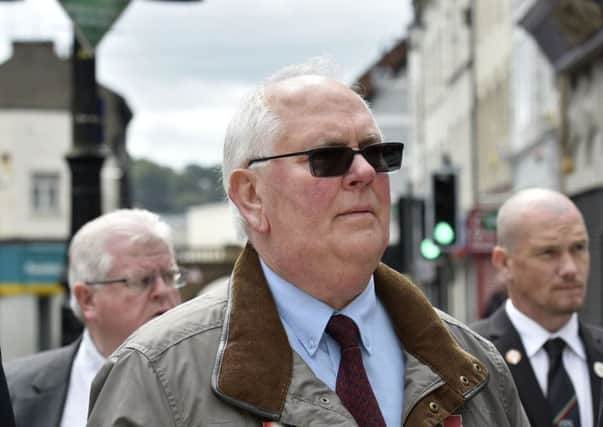'˜Paisley gets credit but Glen Barr led strike'


“Ian Paisley sometimes gets the credit, but Barr was the real leader and planner of that stoppage,” said Dr Connal Parr from Northumbria University.
He was speaking after Mr Barr, aged 75, died in hospital in Londonderry after a short illness.
Advertisement
Hide AdAdvertisement
Hide AdLeading UDA figure Glenn Barr was chairman of the committee which led the 14-day Ulster Workers Strike in 1974 which saw loyalist politicians, the UDA and UVF and general workers paralyse Northern Ireland to bring down the Sunningdale power-sharing Executive at Stormont. However politicians from across the community today paid tribute to the work of his latter years, which was devoted to community development and reconciliation.
Dr Parr said: “He was also one of the few loyalist leaders - with Hugh Smyth and David Ervine - to achieve some political success, and this was really because of his background in trade unionism.”
When he interviewed Mr Barr in 2012, Dr Parr was “struck by how growing up in Derry/Londonderry he talked of living in a ‘mixed ghetto’: Catholics and Protestants lived in the same poverty, the two up/two down house with the outside toilet, and he saw no difference between them. He was really a sophisticated working class politician who was driven in May 1974 as much by contempt for the landed gentry and the politicians who dominated unionist politics as much by his opposition to Irish input in Northern Ireland through the Council of Ireland.”
Mr Barr struck up a friendship with Dr Parr’s grandfather, then health minister Paddy Devlin, and the two considered forming a new left wing party.
Advertisement
Hide AdAdvertisement
Hide AdMr Barr came up with “constructive” plans and documents such as Beyond the Religious Divide (1979) which argued the case for Northern Irish independence.
“Though outlandish, it did reflect how Barr was involved in initiatives which might help move loyalists away from violence and towards some form of political thought,” said Dr Parr. “He also did a lot of work on First World War commemoration with Irish politician Paddy Harte, again reflecting how willing he was to cross the divide himself.”
At a Queen’s University conference on the UWC strike in 2014, Dr Parr recalled that Mr Barr explained that he didn’t want to be involved in politics but that the lack of leadership in unionism forced him to get involved. He said that May 1974 was “the last time that the loyalist people held their head up, the last time they had got a lift from the depravity that they felt themselves in”.
Mr Barr gave a frank and extended discussion on his role in the strike during the conference.
Advertisement
Hide AdAdvertisement
Hide AdHe explained how UDA leader Andy Tyrie told him the United Ulster Unionist Council wanted the UDA to back the strike. Barr advised them to hold it on 14 May 1974 - the date of the Stormont vote on the Sunnigdale Agreement, his proposal being accepted.
At the time, he said, the power workers’ representative complained that the workers were getting all the blame for the strike, and they would need the paramilitaries to help them. While trade unionist Harry Murray wasn’t keen “it was a case of they had to get involved, and the UDA as the largest paramilitary group at the time was asked to take the lead in that” Mr Barr said.
Speaking of the aftermath, he said: “The age-old problem we’ve always had is that the ordinary working class were used again. They were brought out of the rabbit hole and when the dirty work was done and over, and all the plaudits had been handed out, they were shoved back into the rabbit hole again.
“That’s the difficulty of being associated with the loyalist paramilitaries. You get all these ‘great’ people as they did in 1974, joshing up against you to get their photograph taken alongside you. But if you’d had dared mention the fact you were thinking of marrying one of their daughters, they would run a mile. So that’s the way we’ve been treated down through the years.”
Advertisement
Hide AdAdvertisement
Hide AdHe also told his audience about a tussle he had with Ian Paisley over a chair during strike talks.
Mr Barr went out for tea and left his particularly comfortable ‘Carver’ chair empty at the top of the table.
He said: “And when I came in he [Paisley] had plonked himself down on the chair. I said ‘Ian that’s my seat, you’ll have to move’.”
Rev Paisley started to complain about a sore back so Mr Barr said he could keep the chair and asked the doormen: “Will you give Ian a hand to shift that chair?
“So the three boys got round the chair, started lifting him chair and all, so he said, ‘Hold on, hold on!’ He very quickly jumped up then, so the back wasn’t as bad as he was telling us.”